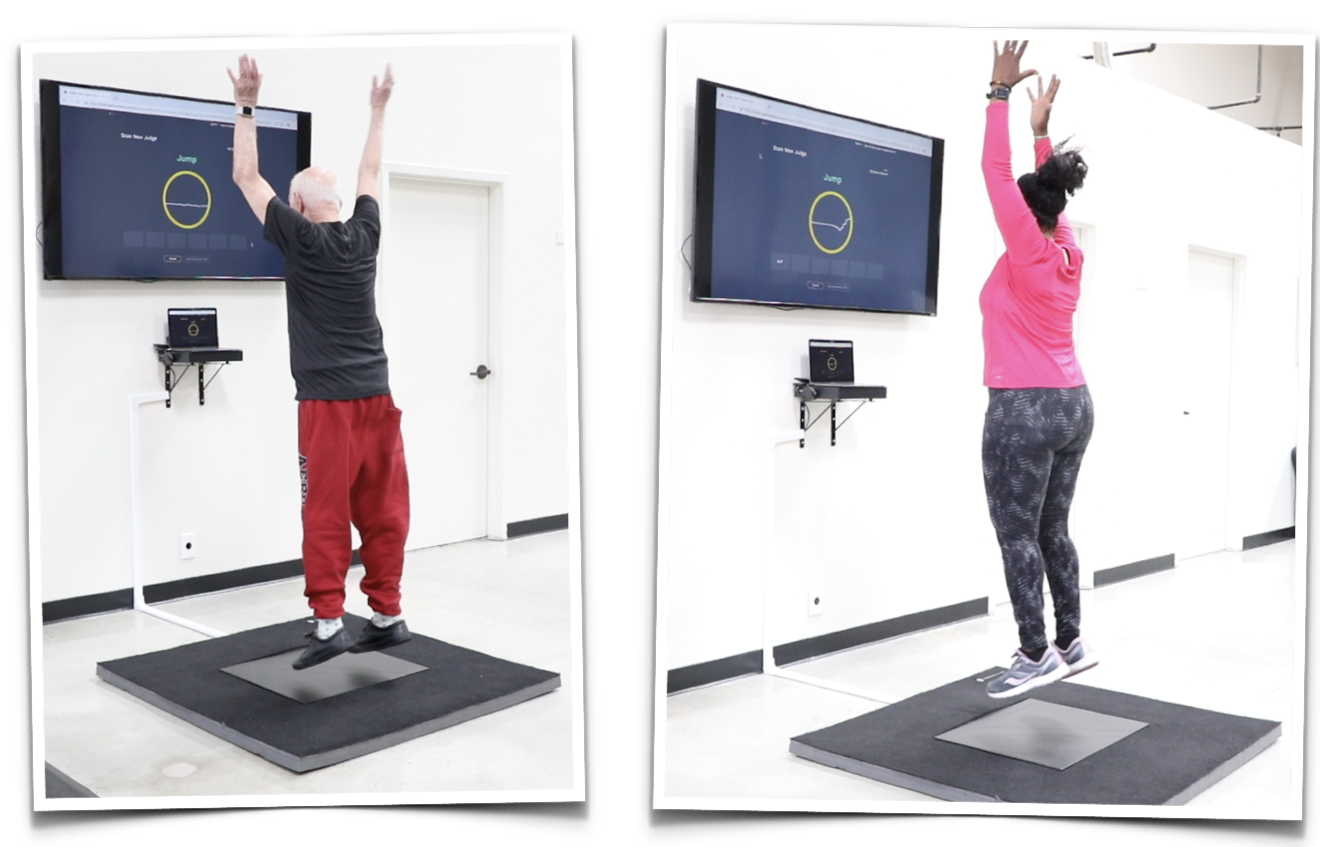This article discusses the existing rationale, literature, and real-world utilization of Jump testing in "non-athletic" or general populations.

The Short Answer:
Yes! The vertical jump is used as an assessment as it is a simple, reliable, and practical way to measure dynamic human movement. While athletes may get higher jump heights, this doesn't necessarily mean they are better or more efficient force producers. In fact, we often see high-level athletes with larger imbalances in their movements as they are often great compensators in their movement, which can result in a greater risk of injury.
Sparta Science began our work with athletes in high school, college, and professional sports, but has since expanded into general health, physical therapy, military readiness, and corporate health. Though there are differences between these populations, the fundamental principle that all humans must interact with the ground (gravity) to move allows Sparta to be utilized across all human populations.
The Long Answer:
At Sparta, we are perhaps best known for working with Elite Sports, however, we aren't simply a sports technology company. We provide validated scientific assessments to help optimize human movement, regardless of your goals. Though we started working in sports, over the last several years Sparta has been used worldwide by elite and conventional military organizations, physical therapy clinics, corporate companies, occupational health, and medical organizations to quickly assess human movement to identify specific plans with the goal of reducing any physical limitation. As much of our staff are former athletes we were born out of sports, but have since evolved into something much more agnostic.
The vertical jump test has been shown to be a reliable and valid assessment across multiple different populations (1, 2, 3, 4, 5, 6). The Jump Scan specifically, assesses dynamic movement holistically by looking at three critical force-time variables - Load, Explode, and Drive. We have established normative data to make interpretation easy and utilizing an array of machine learning techniques we create injury risk prediction models. Different injury risks and prediction models can be more accurate for different populations (for example elbow injuries are much more common in baseball pitchers than infantry soldiers for a similar force profile), but there are a couple of important factors to understand when discussing the validity of a jump in assessing human movement across populations.
First, because we all live on earth we are all bound by the laws of gravity. The Jump Scan is less a sport-specific jump test and more a simple, reliable, practical dynamic human movement assessment. Different assessments can be utilized for athletes using similar hardware, but many of the different movements are going to be sport and even athlete specific. The vertical jump is so simple it can be utilized across all different populations!
The second thing all populations we work with have in common: they are human. This may seem obvious, but as humans, we actually have a lot more in common than is different. To use an example from medicine, elite athletes aren't assessed any differently in their blood panels or echocardiograms... all human bodies function in very similar ways. From a movement perspective, we can see differences in skill or strength, but ALL humans need to create, transfer, and apply force in order to move efficiently and remain healthy!
No matter the field - whether that be physical therapy, elite sports, military, corporate wellness, or just general health - we are all looking to move and feel better to optimize our health and performance. Looking at objective data consistently will give us deeper insight into how to improve and prosper.
References:
- Bellicha, Alice, et al. "Vertical Jump on a Force Plate for Assessing Muscle Strength and Power in Women With Severe Obesity: Reliability, Validity, and Relations With Body Composition." The Journal of Strength & Conditioning Research (2020)
- Singh, Harshvardhan, et al. "Jump test performance and sarcopenia status in men and women, 55 to 75 years of age." Journal of geriatric physical therapy 37.2 (2014): 76-82.
- Nibali, Maria L., et al. "Influence of familiarization and competitive level on the reliability of countermovement vertical jump kinetic and kinematic variables." The Journal of Strength & Conditioning Research 29.10 (2015): 2827-2835.
- Ditroilo, Massimiliano, et al. "Intra-and inter-session reliability of vertical jump performance in healthy middle-aged and older men and women." Journal of Sports Sciences 29.15 (2011): 1675-1682.
- Walsh, Mark S., et al. "The validation of a portable force plate for measuring force-time data during jumping and landing tasks." Journal of Strength and Conditioning Research 20.4 (2006): 730.
- Cowley, Jeffrey C., et al. "Children Who Are Overweight Display Altered Vertical Jump Kinematics and Kinetics From Children Who Are Not Overweight." Pediatric exercise science 1.aop (2019): 1-7.
